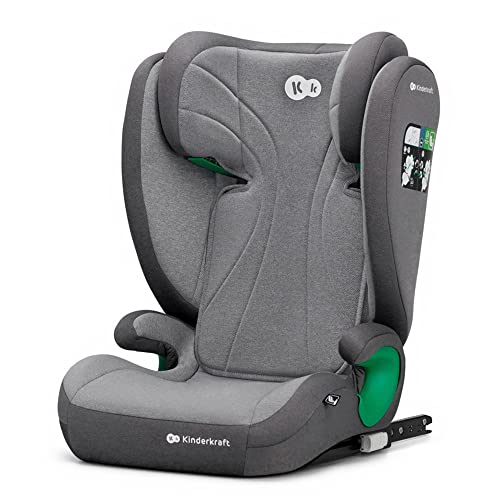Why People Don't Care About Pram
Understanding Prams: A Comprehensive Guide
Prams, brief for 'perambulators', are a necessary piece of devices for moms and dads and caretakers with babies. These wheeled gadgets offer a safe and comfortable method to carry babies, making outings more workable. Nevertheless, prams are not practically convenience; they are likewise an important element of kid advancement and security. This post looks into the types, advantages, and considerations when choosing a pram, ensuring that parents are knowledgeable in their selection.
Kinds of Prams
Prams differ widely in regards to design, functionality, and features. Understanding the types readily available can assist moms and dads choose the best one for their needs.
1. Traditional Prams
Conventional prams are classic baby carriages that usually include a deep lying-down cot. They offer a smooth trip, allowing babies to lie flat and comfortably when out and about.
2. Travel Systems
These are flexible choices that combine a stroller and a car seat, making shifts smooth for parents who often travel. Travel systems facilitate easy transfer between car and pram without interrupting the baby.
3. Umbrella Strollers
Lightweight and compact, umbrella strollers are best for moms and dads who need an easily transportable choice. Though they frequently have less features and might not appropriate for newborns, they are excellent for older infants and toddlers.
4. Jogging Strollers
Designed for active moms and dads, jogging strollers have larger, more steady wheels and a strong frame, allowing them to deal with rough surface. Baby Prams Pushchairs are best fit for households who enjoy outside activities and desire to include fitness into their parenting routine.
5. Double Prams
For households with twins or siblings of close age, double prams offer area for 2 kids side by side or one behind the other. They offer comparable security and convenience functions as single prams however accommodate numerous travelers.
Benefits of Using a Pram
Prams provide many advantages for both kids and parents:
Safety: Prams offer a safe and enclosed area for babies and toddlers, securing them from possible hazards.
Convenience: Many prams are designed with cushioned seats, sunshades, and adjustable recline positions to keep babies comfortable during trips.
Convenience: Prams make it easier for parents to get around, particularly in city environments where carrying a baby can end up being troublesome.
Adaptability: With different designs offered, prams can adjust to different way of lives, whether it's casual walks, running, or traveling.
Bonding Time: Using a pram allows parents to be physically near their baby while exploring and delighting in various environments together.
Choosing the Right Pram
Picking the ideal pram can be difficult given the variety of choices. Here are some considerations to direct parents:
1. Age of the Child
- Newborns: Look for prams that offer complete recline alternatives and compatibility with baby safety seat.
- Infants: Choose a flexible model that enables a transition to an upright position.
- Toddlers: Lightweight and easy-fold designs can be more useful.
2. Lifestyle
- Urban: A compact, quickly maneuverable pram is necessary for navigating city streets.
- Active: Those who jog or go on hiking trips ought to consider a robust jogging stroller.
- Travel: Models that are quick to fold and lightweight are much better for moms and dads on the go.
3. Budget
Prams can vary from economical to high-end designer alternatives. Determine the necessary functions you need and prevent unneeded costs.
4. Safety Standards
Ensure the pram complies with regional security regulations and functions safety belt, brakes, and sturdy building and construction products.
5. Practical Features
Think about features like storage area, detachable seats for simple cleansing, weather canopies, and adjustable handles based on personal choice.
Table of Key Pram Features
Type of Pram
Secret Features
Appropriate Age
Price Range
Conventional Prams
Deep cot; fantastic suspension
Newborn to 6 months
₤ ₤ – ₤ ₤ ₤
Travel Systems
Stroller and safety seat combination
Newborn onwards
₤ ₤ – ₤ ₤ ₤ ₤
Umbrella Strollers
Light-weight; easy fold
6 months onwards
₤ – ₤ ₤
Jogging Strollers
Durable wheels; safety belt
6 months onwards
₤ ₤ – ₤ ₤ ₤
Double Prams
Seats for two kids; varied designs
Newborn to toddler
₤ ₤ ₤ – ₤ ₤ ₤ ₤
FAQs About Prams
1. The length of time can I utilize a pram for my child?
A lot of prams are developed to accommodate kids from newborn through to about four years of age, depending on the model and weight limitation.
2. Can I utilize a pram for running?
Only utilize a running stroller for jogging or running. Regular prams are not created to endure such high-impact activities.
3. How do I clean my pram?
A lot of pram fabrics can be spot cleaned with mild soap and water. Detachable covers frequently can be device cleaned, though it's crucial to check out the maker's directions.
4. What is the weight limitation for prams?
This differs by model but normally varies from around 50 lbs to 75 pounds. Constantly inspect the specs before purchasing.
5. How do I securely protect my baby in the pram?
Make sure that your baby is safely secured in with the five-point harness, and never ever leave them ignored in the pram.
Picking the best pram is an important decision for moms and dads, which involves weighing various factors such as safety, convenience, and benefit. Comprehending the different types of prams readily available and their respective features allows moms and dads to make informed choices that best match their household's requirements. By prioritizing security and performance, caretakers can ensure that walks, runs, and getaways with their youngsters are comfortable and satisfying experiences.
